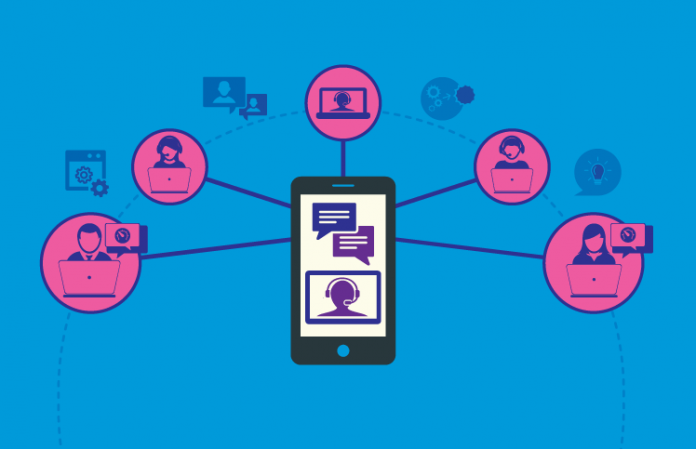
While many organizations are currently providing multichannel customer service, few as yet have evolved their strategy and systems to deliver a true omnichannel customer experience—one that is seamless and personalized, even when switching channels.
What are the top challenges that contact centers face when transitioning to an omnichannel strategy? The following are key insights from industry solutions providers.
ANNA CONVERY
Chief Marketing Officer & Executive Vice President of Strategy, OpenSpan:
One of the top challenges faced by customer experience leaders regarding omnichannel initiatives is the definition of what omnichannel means to their organization. Omnichannel is, in and of itself, not a metric of success—what it means in terms of delivering better, differentiated and efficient customer service is. Many organizations have invested heavily in customer service channels, and continue to refine and add more channels. The ability to stitch these channels together to get an omnichannel view and to enable customer service levels to be consistent and efficient across channels has been challenging.
The contact center has found itself front and center in the omnichannel push. First, because the contact center is often regarded as the center of excellence and the hub of wisdom for customer service transactions, and second, because the contact center is on the receiving end of the points of failure of other channels—your mobile channel doesn’t work, call the contact center; the website doesn’t work, call the contact center; you have no visibility into your claim, call the contact center! As such, this is both an opportunity for the contact center and a challenge.
Gaining visibility across channels and the domino effect of omnichannel activity is key… leveraging cross-channel activity and transaction analysis becomes vital. Ensuring that the customer receives a consistent, efficient and optimized service no matter which channel is very important: Remember, customers expect to be treated as individuals, not a series of individual transactions—so integration of disparate systems and automatically aggregating key customer data is foundational.
Finally, contact centers must enable and empower their agents to support the omnichannel strategy through training, streamlining systems and sharing critical data. This is especially important if the agent is responding to a customer with a broken transaction in another channel.
MADELYN GENGELBACH
Vice President, Strategic Marketing, inContact:
There are a couple of challenges that contact centers have: one is technological and one is people. Regarding the technological challenge, does the contact center have the infrastructure today to move to an omnichannel strategy? The numbers would show that the answer is often no. Many contact centers now have disparate channels. Voice is most common and is routed by an ACD. Email is not being routed by the ACD. Chat is routed in yet another way. It’s difficult to monitor what is going on and also ensure maximum productivity. Here, the channels don’t play well or talk together easily.
The other challenge is a people challenge. There is this sense that there must be a really rapid acceleration of channels—it’s n+1: Add one channel, and then the next, and then the next, and so on. It’s this idea that there is an inexorable pull to adding channels. Sometimes you may have a shortage of agents who can handle another channel.
For instance, when I worked in a contact center there were agents who were extraordinarily gifted at handling people over the phone. But your dream agent for voice may not be your dream agent for chat. An agent’s written skills may not be as developed as his or her verbal skills. The fantastic voice agent may not be ready or suited for chat’s written and concurrent nature.
MICHAEL GREGORIO
Director, Product Management, USAN:
The contact center’s top challenges will be: product (technology), process and people.
Most of the products and applications used in contact centers today are largely obsolete because of their outdated programming models, lack of a native cloud and poor abilities in predicting customer journeys.
Contact center point solutions, such as IVR/ACD or consolidated agent desktops, address specific functionality very well. However, they typically do not provide integration points with other business applications, nor do they support interactions across the customer journey. Organizations that use these systems are often faced with multiple data-entry efforts and disconnected sets of customer data, making it difficult to report accurate information and enforce business process.
More important is the general fact that none of these types of systems speak to customer engagement across multiple channels. As organizations face a more connected, more distributed customer base, they must address the changing requirements of a new generation of interaction between contact center agents and consumers while maintaining a consistent brand experience.
BRIAN KOMA
Vice President & Practice Leader, Customer Experience, Verint Systems:
The No. 1 challenge when transitioning to an omnichannel strategy is the ability to identify a customer and a common interaction which that customer is having, and then connect the activity so that the organization can view the pathway, the customer’s journey and the success of that journey as the customer interacts with the brand.
The second challenge is that an omnichannel approach requires very different skill sets than a traditional call center. For instance, contact center staff that have been recruited for excellent telephone skills may not have the multitasking skills that are necessary for channels like chat, where you can have multiple sessions occurring simultaneously.
Contact center leaders also will have to consider where to find the right people to staff those channels. Do you have the right mix of skills in your center today or will you have to recruit new staff to handle these new channels? Do you ask for volunteers? We’ve seen several models in which contact centers have their existing staff self-identify whether they would be willing to take on some of these new components, as opposed to forcing them into it, because the skill sets are different.
LIZ OSBORN
Vice President, Product Marketing & Solutions, Five9:
A key challenge is working with siloed applications. Organizations generally have different applications for chat, email, SMS—and they’re all cobbled together on top of a system that was originally built for voice. That makes it very difficult to deliver a seamless experience across channels.
Another challenge for larger organizations, in particular, is that different areas of the organization own different pieces of the customer experience. For example, in a large bank, one group may own checking accounts, another handles mortgages, while another owns credit cards—and each one has its own system. To the customer, it’s one account, but putting together the cross-channel customer experience creates a nightmare of complexity for the organization.
KEITH PEARCE
Vice President, Corporate Marketing, Genesys:
The No. 1 challenge is gaining organizational consensus to be aligned to the customer, instead of to the business unit or the particular touchpoint that the business unit has brought to customers. The contact center is often left in an unenviable position when a department launches a channel that is customer-facing. Customers switch among channels an average of three to four times as they interact with a company throughout their customer journey—and they often end up in the contact center. Optimizing a touchpoint is great, but against the reality of the channel switching, you need the context of that channel interaction to be able to best serve the customer on the next channel.
It can be difficult to get the organization aligned on what the omnichannel approach is and who owns the customer experience. They will have to break down the silos of departmental touchpoints and channels that have been offered to customers to create a more holistic or omnichannel approach where, as customers move from channel to channel, the context of their interactions is passed along so they can get the best service action that they need.
MARILYN SAULNIER
Director, Global Contact Center Consulting, Interactive Intelligence:
First, there is much confusion between omnichannel and multichannel. Many think the terms are synonymous. There is actually a pretty significant difference between the two. Multichannel simply means you offer customers more than one access channel. Omnichannel channel takes it to another level by providing the customer with a seamless experience across all the channels supported. Omnichannel means a customer can contact you via multiple channels and the history of their contacts will be available; no need to start over again with each contact. Seamless. Easy.
BRAD SNEDEKER
Innovation Center Manager, Calabrio:
The biggest challenge facing the business is defining what omnichannel means to their organization. True omnichannel ties together multichannel customer experiences. It’s meeting your customer wherever they interact with you and making that interaction a seamless, consistent experience. Once you understand what omnichannel means to your company, the next step is determining how that fits into your contact center and developing a strategy to integrate all channels within it. The most challenging of those channels being brick and mortar and tying that experience to other channels.
Another big challenge facing organizations is quality—actually gathering quality metrics within a process that’s aligned to the business strategy. Integrating quality evaluations, surveys, customer service scores, etc., and unifying those evaluations across all channels (calls, emails, chats, social).
To read the full Q&A panel with more insights on the omnichannel evolution and how it will impact your center, download the article here.




